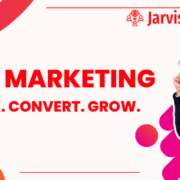How to Use Content Marketing for Effective Demand Generation
Introduction: Why Content Marketing Matters More Than Ever
If you’ve ever felt that your marketing efforts aren’t translating into real sales, you’re not alone. Many IT professionals and marketers struggle to connect content with actual business growth. That’s where demand generation comes in—it’s the bridge between awareness and conversion, turning interest into action.
Content marketing isn’t just about blogging or posting on social media. When done strategically, it becomes a powerhouse for lead generation strategies, helping your audience understand your solutions while nudging them naturally through the sales process. Let me share how you can make this work for your business.
1. Understand Your Audience Before Creating Content
You wouldn’t pitch an advanced S&OP software to someone who doesn’t even know what supply planning is, right? Understanding your audience is the first step in any effective demand generation strategy.
Start by mapping out buyer personas:
- What problems keep them up at night?
- Which tools do they currently use?
- Where do they consume content—blogs, webinars, social media, or forums?
Once you have these insights, your content can address real pain points. For example, a blog about AI advertising for mid-size tech companies resonates far more when it explains practical applications rather than vague concepts.
2. Create Content that Moves Leads Through the Funnel
Demand generation isn’t just about attracting eyeballs—it’s about nurturing prospects toward meaningful actions. That’s where lead generation and lead management come into play.
Here’s how you can structure your content:
- Top of Funnel (TOFU): Educational content like blog posts, infographics, and explainer videos. Example: “How AI and Marketing Are Changing IT Operations.”
- Middle of Funnel (MOFU): In-depth guides, webinars, and case studies. Example: “Step-by-Step Guide to Optimizing Your S&OP with AI Tools.”
- Bottom of Funnel (BOFU): Product demos, consultations, or free trials to convert interest into action.
By aligning content with each stage, you create a seamless journey for leads—making your sales process more predictable and efficient.
3. Leverage AI Marketing Tools for Smarter Campaigns
AI isn’t just a buzzword; it’s transforming content marketing and lead generation strategies. AI marketing tools can help you:
- Personalize content recommendations based on user behavior
- Predict which leads are most likely to convert
- Optimize campaigns for maximum ROI
For instance, imagine using AI advertising to automatically target prospects who visited your S&OP webinar but didn’t sign up for a demo. You’re not spamming—they’re seeing content that’s relevant to their journey.
4. Integrate Demand Generation with Your Sales Process
A common mistake is treating demand generation and the sales process as separate silos. They work best together. Share insights from your content marketing efforts with sales teams, so they know which leads are most engaged and what messaging resonates.
Think of it like passing a relay baton: marketing generates the lead, nurtures it with content, and then hands it to sales with all the context needed to close the deal. A smooth handoff improves lead management and ensures no opportunities fall through the cracks.
5. Measure, Adjust, Repeat
Finally, no content strategy is complete without measurement. Track metrics such as:
- Conversion rates from content downloads
- Engagement rates on AI-focused blog posts
- Lead quality and progression through your sales process
Use these insights to refine your lead generation strategies. Maybe your webinar on AI-powered S&OP tools is a hit, but your blog on general AI marketing topics underperforms. Adjust, test, and repeat—success comes from iteration.
Conclusion: Start Small, Think Big
Content marketing for demand generation doesn’t have to be overwhelming. Start by creating content that genuinely helps your audience, align it with your lead generation efforts, and leverage AI marketing tools to work smarter, not harder.
Remember, every blog post, webinar, or guide is a stepping stone in the journey from curious visitor to loyal customer. Start small, stay consistent, and watch how strategic content transforms your sales process.

